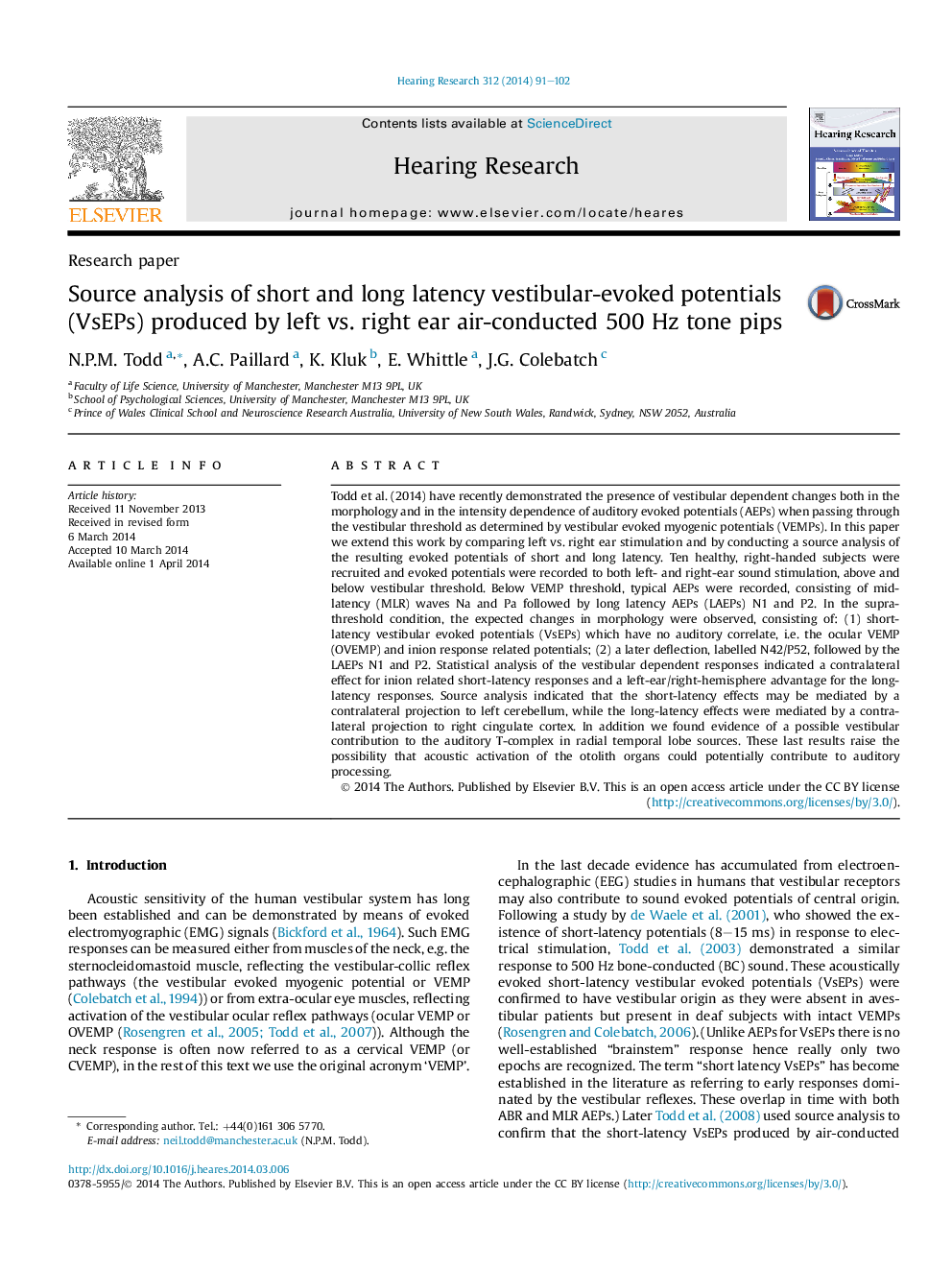| کد مقاله | کد نشریه | سال انتشار | مقاله انگلیسی | نسخه تمام متن |
|---|---|---|---|---|
| 6287401 | 1615588 | 2014 | 12 صفحه PDF | دانلود رایگان |

- AEPs recorded below and above VEMP threshold for left vs. right ear stimulation.
- Above VEMP threshold expected short- and long-latency VsEPs observed.
- Short-latency VsEPs at 10Â ms in infra-ocular and posterior leads.
- Longer-latency VsEPs characterised by N42/P52 in central leads, followed by N1.
- Source analysis indicates recruitment of cingulate vestibular cortex.
Todd et al. (2014) have recently demonstrated the presence of vestibular dependent changes both in the morphology and in the intensity dependence of auditory evoked potentials (AEPs) when passing through the vestibular threshold as determined by vestibular evoked myogenic potentials (VEMPs). In this paper we extend this work by comparing left vs. right ear stimulation and by conducting a source analysis of the resulting evoked potentials of short and long latency. Ten healthy, right-handed subjects were recruited and evoked potentials were recorded to both left- and right-ear sound stimulation, above and below vestibular threshold. Below VEMP threshold, typical AEPs were recorded, consisting of mid-latency (MLR) waves Na and Pa followed by long latency AEPs (LAEPs) N1 and P2. In the supra-threshold condition, the expected changes in morphology were observed, consisting of: (1) short-latency vestibular evoked potentials (VsEPs) which have no auditory correlate, i.e. the ocular VEMP (OVEMP) and inion response related potentials; (2) a later deflection, labelled N42/P52, followed by the LAEPs N1 and P2. Statistical analysis of the vestibular dependent responses indicated a contralateral effect for inion related short-latency responses and a left-ear/right-hemisphere advantage for the long-latency responses. Source analysis indicated that the short-latency effects may be mediated by a contralateral projection to left cerebellum, while the long-latency effects were mediated by a contralateral projection to right cingulate cortex. In addition we found evidence of a possible vestibular contribution to the auditory T-complex in radial temporal lobe sources. These last results raise the possibility that acoustic activation of the otolith organs could potentially contribute to auditory processing.
Journal: Hearing Research - Volume 312, June 2014, Pages 91-102